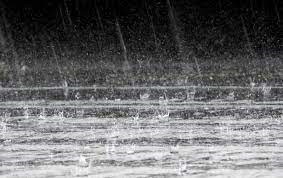As spring continues and the rivers rise, everyone who lives in our Mississippi River Valley knows that a few days of heavy rain can be a big deal, or even trigger a flash flooding event that causes widespread destruction in a matter of hours.
This is why drainage infrastructure is vital to the operation of our cities. This infrastructure guides the water from rain and snow — collectively known as storm water — to one reservoir and then dispenses it, either back into a large body of water, a field or a water treatment plant. Drainage systems help us avoid floods, but they’re also an integral part of agriculture, as farmers must manage the storm water in their fields so it doesn’t drown their crops.
Drainage systems can be as major as underground drains or as common as the storm drains and retaining walls in your neighborhood. As the spring rains continue, this is a great chance to think about your township’s drainage systems and flooding protocols. Do you need to bulk up your infrastructure? Let’s talk it through.
Rain vs. Drain
This infrastructure is unobtrusive by design, which means it’s also easy to overlook. However, drainage systems help us manage storm water and avoid damage to buildings, land and other structures; to that goal, these systems are everywhere once you start to notice them!
There are four main types of drainage systems. Perhaps the most recognizable, downspouts and gutter systems are usually the first line of defense against heavy rainfall. These elements are installed directly on a building and guide water off the roof and toward the street. The storm water is then routed toward a storm drain and carried away via pipes or other drainage systems — usually a surface drainage system.
Surface drainage systems are a common part of urban planning. These systems use ditches, levees or other channels to drain water from the surface of the land. Pay attention as you drive, and you’ll notice the ditches that usually run on the sides of the road; that’s a surface drainage system in action. These systems do a lot of the work to help us avoid floods.
As you might guess from the name, a subsurface drainage system goes one layer deeper — literally. These systems have a feature that is placed beneath the topsoil to manage excess water. Very common in agriculture, the system works at the root level to prevent water from sinking deeper into the soil and drowning crops. The mechanics of each subsurface drainage system can vary based on soil type, topography and other factors, so farmers can choose the system that’s right for their land.
A slope drainage system uses gravity to move storm water down the land into pipes, which then carry the water away. These systems have the benefit of working quickly to drain water and get it away from structures, which is useful in the event of a flash flood. But this can also cause erosion after heavy use or if not installed properly. In fact, all drainage systems have an impact on the environment, so it’s important to do your homework to decide which system is right for your property or city. (To combat this, green infrastructure is becoming more popular; read more about it here.)
While each of these systems have their own characteristics and purposes, they must work together to successfully drain storm water. Let’s say that there’s a major rainstorm passing through our area. (This example is not such a stretch in the rainy Midwestern springtime!) Right away, water begins collecting in the gutters of your house, where it’s guided through a downspout to your sloped driveway. The storm water follows its natural course down the slope and into a ditch on the side of the road. Depending on how the ditch is designed, maybe now the water flows into a storm drain, or else it travels through underground pipes. Either way, it’s eventually routed into a lake or river nearby, which rises.
Drainage infrastructure can’t prevent all flooding events, as the water must still go somewhere. But if we can minimize flooding in streets and fields, we avoid major inconveniences and crop damage at best, and tragedies at worst.
What’s Your Drainage?
There’s no time like the present to think about your drainage infrastructure. Heneghan and Associates, P.C. regularly completes storm water engineering projects for municipalities, county governments, commercial facilities and more. We can design the drainage system that is best suited for you. Click here to check out our storm water services!
In the meantime, do what you can to keep your systems running smoothly. For example, pay attention to the weather, and if you know heavy rainfall or a flash flood is possible, make sure that your gutters are clear. These little steps can be the difference between a normal rainy day and a flooded front yard.
If you have questions about drainage infrastructure or concerns about your systems, don’t hesitate to contact us! Visit our website to learn more about storm water engineering and what we can do for you.

